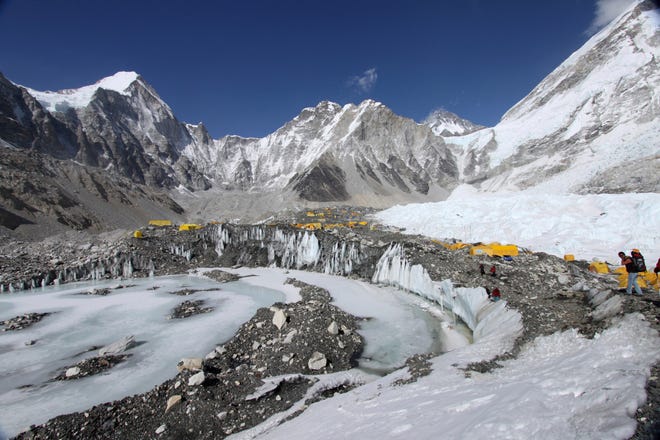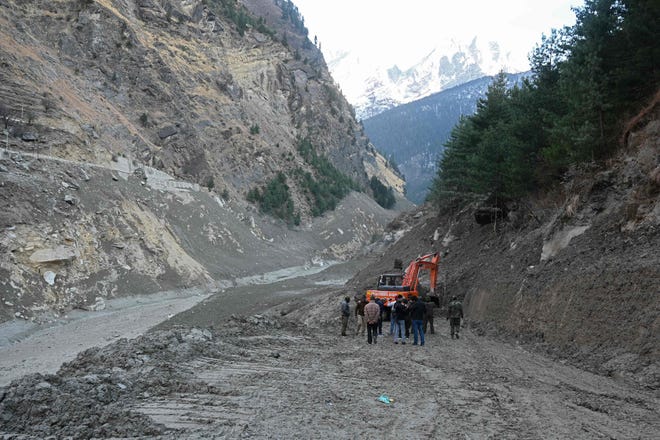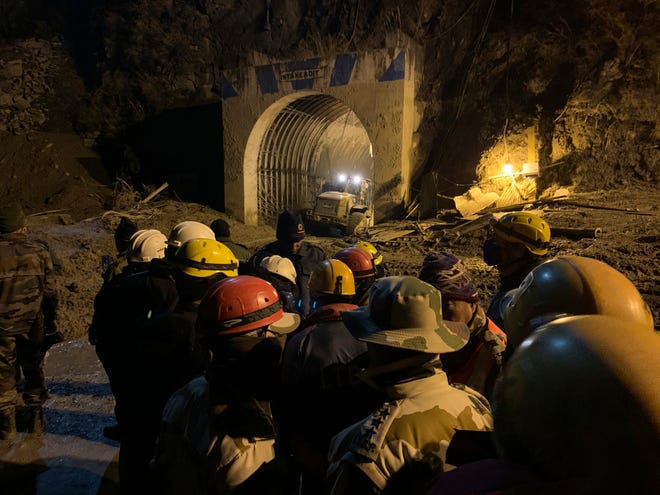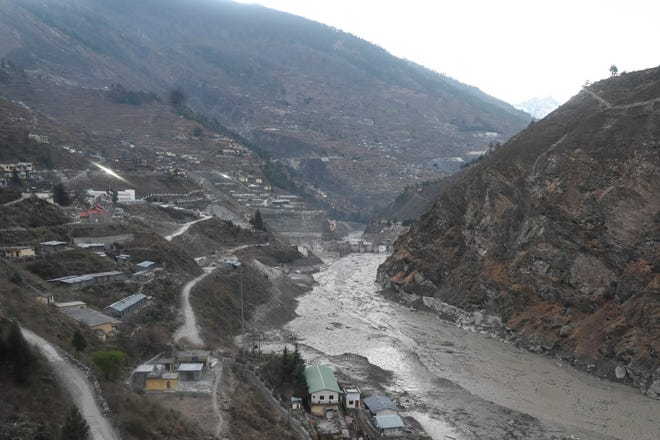What to know about deadly India flooding
At least 26 persons are lifeless and 165 are lacking following a flood that hit northern India on Sunday. The flood was brought on when a part of a Himalayan glacier broke off and despatched a wall of water and particles down a mountain, washing every thing away in its path.
Rescuers on Monday had been attempting to rescue 37 power plant workers who remained trapped in a tunnel.
More than 2,000 members of the navy, paramilitary teams and police have been collaborating in search-and-rescue operations within the northern state of Uttarakhand.
The flood was brought on when a portion of Nanda Devi glacier snapped off Sunday morning, releasing water trapped behind it.
“Everything was swept away, people, cattle and trees,” Sangram Singh Rawat, a former village council member of Raini, the location closest to the glacier, told local media, in accordance to Reuters.
Here’s what to know:
How are glaciers fashioned?
Glaciers start to kind when snow stays in the identical space year-round, the place sufficient snow accumulates to rework into ice, the National Snow and Ice Data Center stated. Each 12 months, new layers of snow bury and compress the earlier layers.
Most of the world’s glacial ice is present in Antarctica and Greenland, however glaciers are discovered on practically each continent, even Africa.
A big cluster of glaciers are within the Himalayas, that are a part of India’s lengthy northern border. Sunday’s catastrophe occurred within the western a part of the Himalayas.
More:2020 falls just short of being Earth’s hottest year on record as global warming continues
How does a glacier burst?
Proglacial lakes, fashioned after glaciers retreat, are sometimes certain by sediment and boulder formations. Additional water or strain, or structural weak point, may cause each pure and man-made dams to burst, sending a mass of floodwater surging down the rivers and streams fed by the glacier.
In this case, National Snow and Ice Data Center scientist Bruce Raup informed USA TODAY that the reason for this burst seems to be a landslide that collided with a steep glacier.
He stated that steep mountain environments could be hazardous for numerous causes, together with the truth that snow and ice on steep slopes could be unstable and slide catastrophically. In addition, rock and soil slopes, which endure freeze/thaw cycles, could be unstable and may launch, significantly throughout thaw cycles, Raup stated.

Is international warming concerned?
Experts stated the catastrophe could possibly be linked to international warming and a crew of scientists was flown to the location Monday to examine precisely what occurred.
Geologist Dwarika Dobhal, from the Wadia Institute of Himalayan Geology, informed the Guardian that “climate change will make these events more common.”
High temperatures coupled with much less snowfall can speed up melting, which causes water to rise to doubtlessly harmful ranges.
“Most mountain glaciers around the world were much larger in the past and have been melting and shrinking dramatically due to climate change and global warming,” stated Sarah Das, an affiliate scientist on the Woods Hole Oceanographic Institution.
Some 3 million Olympic-size swimming swimming pools stuffed with water melts from glaciers within the Himalayas annually, a 2019 research stated, and local weather change is the first trigger.
Since the early twentieth century, with few exceptions, glaciers around the globe have been retreating at unprecedented charges, the National Snow and Ice Data Center stated.

Can glacial floods be predicted?
Past deadly or extremely harmful glacial floods have occurred in Peru and Nepal. For instance, in Peru in 1941, 6,000 individuals died when a glacial lake out of the blue burst by its dam, flooding the city of Huaraz beneath it.
A variety of imminent doubtlessly deadly glacier burst and flood conditions have been recognized worldwide, together with within the Himalayas and South American Andes.
But whereas monitoring is feasible, the remoteness of most glaciers presents challenges.
“There are many glaciers and glacial dammed lakes across the Himalayas, but most are unmonitored,” Das stated. “Many of these lakes are upstream of steep river valleys and have the potential to cause extreme flooding when they break. Where these floods reach inhabited regions and sensitive infrastructure, things will be catastrophic.”
Contributing: The Associated Press





